The New Jerusalem Version is a brand new addition to the Messianic Bible arena, first published in 2019 and updated in 2022. It comes from Hineni Publishers located in the Netherlands. At the present time, it appears to only be available directly from the publisher.
New Jerusalem Version
Hineni Publishers
2019/2022
There is a growing list of “Messianic” Bibles out there, and though I have found some of them great for reading and to get a Jewish or Hebrew understanding of the Scriptures, I’ve always recommended a reputable and respected English translation as your primary Bible. It is best to use the English Standard Version (ESV), New American Standard Bible (NASB), or New King James Version (NKJV) for study, and to supplement it with something like the Complete Jewish BIble (CJB) or Tree of Life Version (TLV) for a Hebraic flavor or just for reading. I’ve never recommended a Messianic Bible as your primary Bible – at least, until now. I think that may change.
The New Jerusalem Version (NJV) is a literal, word-for-word translation worthy of being your main, primary Bible. Actually, it shouldn’t really be called a “translation” but rather a “version,” as the name suggests. According to the publishers, “The intention of the New Jerusalem Version (NJV) is not to produce a new translation but rather to improve an existing one.” That is where it get’s its strength.
The New Jerusalem Version is an update of the highly respected and scholarly American Standard Version (ASV) of 1901, which is now in the public domain. The updates, according to the publisher, are considerations from the World English Bible (WEB, also based on the 1901 ASV) and the 1917 edition of the Jewish Publication Society Tanakh.
The New Testament is edited or updated according to the Majority Text. I tend toward the Alexandrian text, and the Majority Text is a Byzantine text. But in the NJV, the variations (which really are very few) are clearly noted, as are the variations between the Majority Text and the Received Text used for the KJV. For me, that isn’t a problem, in fact it is very helpful.
The publisher describes the New Jerusalem Version with three words: Literal, Kind, Trustworthy. It is literal because it is a word-for-word translation stemming from the 1901 ASV and founded on the Masoretic Text and Majority Text. It is kind in that it is respectful of the Jewish people and Jewish culture. And it is trustworthy as a literal translation without word changes reflecting a doctrinal bias.
Before we get too far, we need to clarify one important point: the New Jerusalem Version (NJV) is NOT the same thing as the New Jerusalem Bible, a Catholic Bible published in 1985. Be careful in your search that you don’t get the wrong one.
The New Jerusalem Version Scriptures
The NJV contains both the Tanakh (the Hebrew Bible, the Old Testament) and the Brit Chadashah (the New Testament). These are further broken down as the Torah, the Prophets, the Writings, the Good News (Gospels), and the Messianic Writings. With these five sections each having a “divider” page, there is no such “divider” page between the “Old” and “New” Testaments. Neither do the page numbers start over again. It’s all one book.
So, with the divisions of the Hebrew Bible being the Torah, Neviim (Prophets), and Ketuvim (Writings), from which we get the acronym TaNaKh, the order of the books also follows the layout of the Hebrew Bible. This is not the same as most Protestant Christian Bibles. For some that may be a little confusing, but not to worry. There is a second Table of Contents with the books listed alphabetically by their English names.
The books of the Good News and Messianic Writings – the Brit Chadashah or New Testament – are in the traditional order found in nearly all Bibles.
In the Tanakh, the chapter and verse numbering also follows the Hebrew tradition rather than Christian tradition – “tradition” being an important word, as those divisions are NOT holy Scripture and do not exist in the actual Hebrew text. Where they differ, the Christian verse number is in parenthesis () following the Hebrew verse number.
Proper Names in the New Jerusalem Version
For the topic of the Divine Name, I will quote from the Preface to the NJV:
Out of respect for the holy name the New Jerusalem Version has preserved the original Hebrew: יהוה. It is up to the reader how to pronounce the most holy name, though not to be used in vain. In Jewish tradition it is not without reason that when the name is spoken aloud it is uttered as “Adonai” or “Hashem” (The Name). This goes back to the third commandment: “You shall not take the name of יהוה your God in vain; for יהוה will not hold him guiltless who misuses His name.” (Deut. 5:11)
The Divine Name is the only place Hebrew characters are used in the NJV (other than the titles to some books). I did not find it distracting at all. But because this book contains the actual name of God, the NJV Bible comes with specific instructions:
Not all Bibles are the same, a Bible carrying the Holy Name of God is not a regular book In Hebrew, it is called a sefer. A sefer (lit. “scroll” or “book”) is a holy book of Hebrew religious literature, like a Torah scroll. It is very special and is to be handled in a sacred way because it contains the Holy Name of God. By treating your sefer with reference and respect you preserve its holiness.
Therefore, to offer you the most intimate experience with your NJV Bible, please take the following precautions into consideration:Do not place your Bible on the ground.
Do not place other items on top of your Bible.
Do not bring your Bible int the bathroom.
Store your Bible in a dry place.
Other Proper Names in the New Jerusalem Version
The name of the Messiah is properly rendered as Yeshua which is, of course, what his momma called him. The Greek word Christos, traditionally translated as Christ in the ASV, is changed to Messiah (an English word derived from the Hebrew mashiach). So you will read the phrase “Yeshua the Messiah” instead “Jesus Christ” (e.g., Mark 1:1) and “Messiah Yeshua” instead of “Christ Jesus” (e.g., Acts 24:24). It is actually pretty natural.
Most other names of people are the common English names we read in other English translations. This is very helpful, especially if you have ever read some of the other Messianic Bibles and had to stop and figure out who is being called by the Hebrew name. There are a few notable exceptions, primarily in the Brit Chadashah (NT). In fact, I haven’t found any in the Tanakh yet.
Look for Miriam instead of Mary, Elisheva instead of Elizabeth, and Yochanan instead of John. There are a couple of others that appear much less frequently. The NJV Brit Chadashah correctly has “Jacob” instead of “James,” but does not call him “Ya’akkov” – or however you might sometimes see it transliterated. This is good, since Jacob is Jacob in the Tanakh and it is consistent. Still, it kind of makes you pause when you read about “Peter, Jacob, and Yochanan.”
The names of places are all according to what we know in other English translations – again, a very good thing. You don’t have to stop reading and try to figure out where something is. It’s Jerusalem, Egypt, Samaria, Nazareth, Galilee… you get the idea.
Hebrew Words in the New Jerusalem Version
The New Jerusalem Version incorporates a limited vocabulary of translated Hebrew words in the text. The publishers do this to bring attention to “Hebrew words that can’t be captured in a single English word.” Among those are the descriptive names of God and all of the Appointed Times. They aren’t overwhelming, and the publisher says they are for added clarity and are intended to cause the reader to slow down and take in the beauty of the Hebrew language.
The Preface draws attention to two Hebrew words of particular importance: chesed and emunah. These words also appear in the Brit Chadashah where the equivalent Greek words appear in the source text. All of the Hebrew transliterated words in the NJV are in italics and listed in a brief glossary in the back, and after a short while the reader can begin to understand them while reading without going back and forth.
Physical Characteristics of the New Jerusalem Version
From the NJVBible.com website:
Product specifications:
• Softcover
• Imitation leather [also calf split leather]
• Personal size format
• English text
• Black letter
• 9 pt font
• 32 gsm PrimaBible paper
• Gold Gilded pages
• 2 Ribbon Markers
• Smyth Sewn
• Paper size: 5.5″ x 8.3″ (140 x 210 mm)
• Dimensions: 5.9″ x 8.6″ x 1.4″ (150 x 218 x 29 mm)
• 1392 pages
• Printed and bound by Royal Jongbloed
The text is in two columns on each page. The 32 gsm (grams per square meter) paper is pretty thin, similar to what you find in most leather Bibles, and makes the 1392 pages a manageable size. I think the thickness shown is a misprint though, as 29mm is actually 1.14″ which is what my copy measures. The text appears to be line-matched, meaning the lines of text are in the same position on both sides of the page, preventing shadowing. With the thin paper, there is still slight shadowing from the next facing page.
It’s all black-letter text, which is great. I don’t like red-letter editions at all. The NJV is available in two imitation leather and two calf split leather covers. (Did you know a lot of Bibles are covered with pigskin?)
There are no headings within the chapters added by the editors, just Scripture (another plus). The Psalms include the descriptive titles which are a part of the Hebrew text. And while the names of the books are given in English and transliterated Hebrew, there are no forced or made-up Hebrew names given to New Testament books like you find in some Messianic Bibles. This is an English book, so it naturally opens left to right, the pages turn left to right, and the columns of text read left to right.
In the back of the NJV are several helps, including:
- A Glossary of all transliterated Hebrew terms used
- The 54 Torah Portions (but not including Haftarah or Brit Chadashah readings)
- Hebrew Blessings, including the Shema, Erev Shabbat Blessings, and Havdalah
- A listing of the Appointed Times as found in Leviticus 23
- A list of Hebrew months (traditional names) beginning in the Spring and showing the related Appointed Times
- The Hebrew Alphabet including numeric values
- A Table of Weights and Measures
- Pictorial illustrations of the Seven Species from the Land of Israel
- Instructions for How to Handle Your Bible
There are no maps, and there is no concordance. The New Jerusalem Version does not include the books of the Deuterocanon or Apocrypha – for that we recommend the stand-alone English Standard Version Apocrypha. It does not include pseudepigrapha (such as Jasher, Jubilees, or Enoch). For these additional writings, we recommend the Literal Standard Version Complete 54-Book Apocrypha.
A Few Observations on the New Jerusalem Version
I was not able to determine whether the New Jerusalem Version was compiled by one person or a team.
This is not a “sacred name” Bible. Even though it uses the Hebrew characters for the proper name of God, no attempt is made to tell the reader how to pronounce it. The name of the Messiah is transliterated as Yeshua, the commonly accepted Hebrew name. You will not find the syllables of “Yah” worked into other proper nouns, and there is no list of “pagan” words that must be avoided.
The NJV does pass the test for accuracy in using the Divine Name.
The 1901 American Standard Version incorporated the name “Jehovah” in the Old Testament (now known to be incorrect). Although the name Jehovah did not appear in the ASV New Testament, as the Greek source text does not have it, in this edition of the NJV the Hebrew characters for the proper name of God are used in the Brit Chadashah in direct quotations from the Tanakh. I have not found it added to other passages from the Greek New Testament.
The Greek New Testament does not quote from the Masoretic Text; most quotations are from the Greek Septuagint, which does not use the proper name of God. The NJV, true to the Greek text, correctly renders these quotes from the Septuagint but does take the liberty of inserting the Hebrew characters for the Divine Name where the Masoretic Text would use them. One place to easily confirm the use of the Septuagint vs. the Masoretic Text is by comparing quotes in Hebrews 8 with the source in Jeremiah 31.
Where the Tanakh is quoted, it is shown in all upper case letters and a reference is provided in the footnotes. There are a few other cross references as well.
Limited footnotes are used in the Tanakh, and there are considerably more footnotes in the Brit Chadashah. This is to be expected (and appreciated!) as there variations in the underlying text. These footnotes in the Brit Chadashah help bridge the gap between my preferred Alexandrian text (desigated as NU) and the Majority Text, as well as identify the readings found in the King James family (designated TR).
You can find some great examples of this in the last two chapters of Revelation. Here are examples:
21:6 TR and NU read “It is done! I am the Aleph and the Tav, the Beginning and the End.
22:14 NU reads “wash their robes” instead of “do his commandments”
22:19 TR reads “Book” instead of “tree”
The note at Revelation 21:6 is actually incorrect. The TR and NU read “I am the alpha and the omega” because the TR and NU are both in Greek. Sometimes the use of Hebrew transliterated words in an English text can be problematic. Consider this passage from the ASV and the NJV:
And the people of the land shall worship at the door of that gate before Jehovah on the sabbaths and on the new moons. (ASV)
The people of the land shall worship at the door of that gate before יהוה on the Shabbats and on Rosh Chodesh. (NJV)
Ezekiel 46:3
Of course, those of us in the Messianic and Hebrew Roots community read that passage and understand exactly what is meant by the terminology. But it is not correct. First, the plural of Shabbat is Shabbatot, not Shabbats. At least, it is in this case. That can change depending on the possessive form – My Sabbaths, your Sabbaths, their Sabbaths, etc. It is not as simple as English, and can be really confusing. So, Shabbats it is.
There is a similar issue with the term Rosh Chodesh. We think of that as the “new moon,” but the word rosh is not in the Hebrew text. And it should be plural – the Hebrew text says chadashim but, again, that is awkward for us. So would be the totally incorrect term rosh chodeshes. So, I guess if you are going to do this mixture of English and transliterated Hebrew, you have to compromise to get the best choice of words.
In the Brit Chadashah the NJV is somewhat inconsistent in using the word “Master” or “Lord” to translate the Greek word kurios. Consider this passage, where “Master” and “Lord” are both the same Greek word, Kurie (kurios):
Then Peter, turning around, saw a disciple following, this was the disciple whom Yeshua loved, the one who had also leaned on his breast at the supper and asked, “Master, who is going to betray you?” Peter seeing him said to Yeshua, “Lord, what about this man?”
John 21:20-21 NJV
Unlike the 1901 ASV, the New Jerusalem Version correctly applies the Granville Sharp Rule of Greek grammar in Titus 2:13 and 2 Peter 1:1. That is doctrinally important. If you don’t know what that is, give it a Google search.
Conclusion and Recommendation
The New Jerusalem Version is a literal, word-for-word translation containing both the Tanakh and Brit Chadashah (the Old and New Testaments). It is based on scholarly and respected existing English translations updated to emphasize the Hebraic character of the Holy Scriptures. The Messianic Light highly recommends the New Jerusalem Version, and it is suitable for use as your main Bible translation. As always, we recommend using multiple Bible versions, including other reputable translations like the English Standard Version, the New American Standard Bible, and the New King James Version.
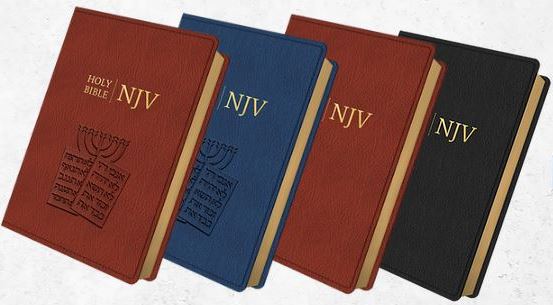

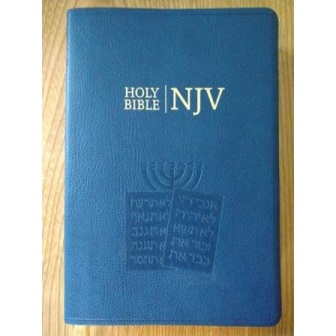
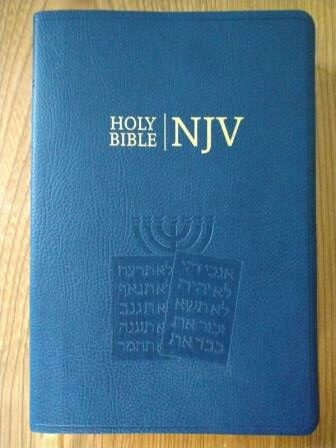
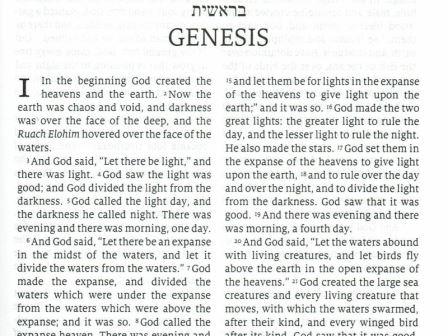
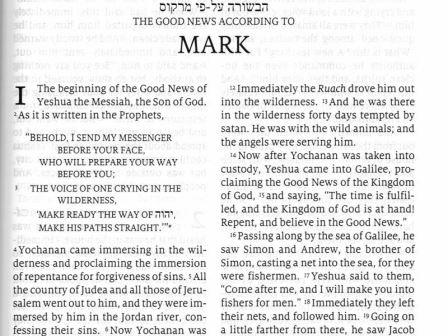
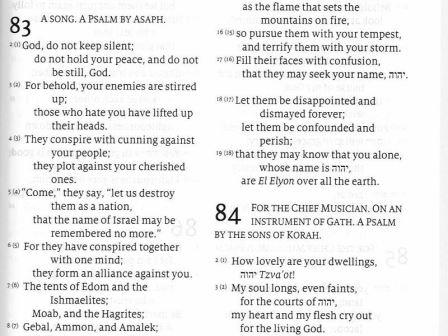
Is there a large print version available for the New Jerusalem Bible? If so, where can it be found? thank You
I am not aware of a large print version. You can contact the publisher at the link above to see if there is one available or if they have plans to publish a large print version.